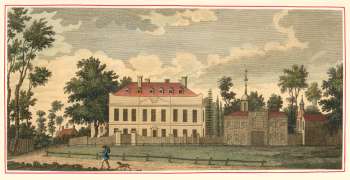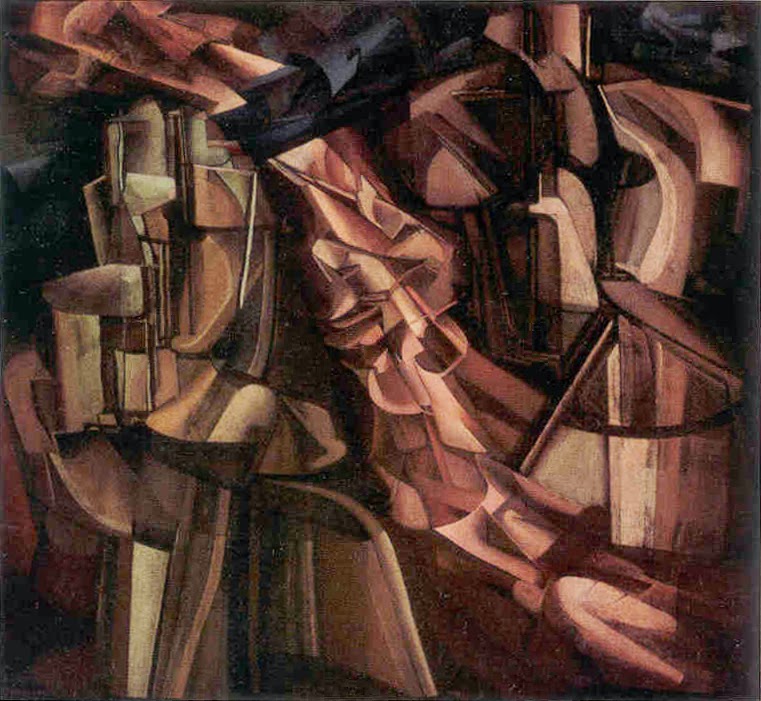Tuesday, May 27, 2014
Duchamp, Arensberg and Stella
In a recollection shared with Arturo Schwarz almost fifty
years later, Duchamp said the idea of Fountain arose in a conversation with Arensberg and Stella, and “they immediately went to buy the item.”
http://www.danielrothbart.com/schwarz.html
http://www.danielrothbart.com/schwarz.html
Historical note
Arensbergs lived in New York from 1915 to 1921 . . .
https://www.philamuseum.org/pma_archives/ead.php?c=WLA&p=hn
https://www.philamuseum.org/pma_archives/ead.php?c=WLA&p=hn
Monday, May 26, 2014
Duchamp Hartley, Levine
Marsden Hartley’s 1913 painting The Warriors.
More Information: http://artdaily.com/news/23804/Marsden-Hartley--American-Modern-at-The-Boise-Art-Museum--#.U4OhLig1D5F[/url]
Copyright © artdaily.org
More Information: http://artdaily.com/news/23804/Marsden-Hartley--American-Modern-at-The-Boise-Art-Museum--#.U4OhLig1D5F[/url]
Copyright © artdaily.org
Marsden Hartley’s 1913 painting The Warriors.
More Information: http://artdaily.com/news/23804/Marsden-Hartley--American-Modern-at-The-Boise-Art-Museum--#.U4OhLig1D5F[/url]
Copyright © artdaily.org
More Information: http://artdaily.com/news/23804/Marsden-Hartley--American-Modern-at-The-Boise-Art-Museum--#.U4OhLig1D5F[/url]
Copyright © artdaily.org
Marsden Hartley’s 1913 painting The Warriors
More Information: http://artdaily.com/news/23804/Marsden-Hartley--American-Modern-at-The-Boise-Art-Museum--#.U4OhLig1D5F[/url]
Copyright © artdaily.org
More Information: http://artdaily.com/news/23804/Marsden-Hartley--American-Modern-at-The-Boise-Art-Museum--#.U4OhLig1D5F[/url]
Copyright © artdaily.org
Marsden Hartley - The warriors 1913 . via
Objects of indifference
Marcel Duchamp talks with Martin Friedman, Walker Art Center
director (1961-1990), about the readymade. October 18, 1965
MF: One of the things we are, of course, tremendously
interested idea is in the whole idea of the ready made. We’re familiar with the
concept of junk sculpture. This is something that such artists as Dankievitch
and even Picasso in earlier days more or less advanced. To pick up an object which
was made for an entirely different use, possibly a discarded object, which because
of its shape and its patination, it’s configuration suggests another
possibility, It maybe a very satisfying texture a very romantic kind of quality
about the piece, in other words, it became a kind of chosen object but chosen for
aesthetic reasons.
In what respect does junk sculpture differ from the concept of
the ready made, let’s say for example the bottle rack or the bicycle wheel
MD: This was of course the difficulty when it came to my
mind, but that was back in 1915 when I applied the word readymade to these
objects. In fact I only made 13 of them in my life, in 40 years, so its not a
very much of an occupation, but even so (laughter)
even so, I mean, the fact of choosing, of selecting and deciding on ONE was the
result of being very careful about not using my sense of beauty or my belief in
some aesthetics of some kind. In other words, finding some object of complete
indifference as far as aesthetics are concerned, and ah, that indifference is
very difficult because there is always some detail in any object that will attract
you aesthetically, meaning that you will find it beautiful or even ugly, which
is the same thing. Ugly or beautiful is the same thing when it comes to
choosing an object in the form of a ready made, by ready made also, the idea is being made by, either
manufactured or made by another person can be a ready made too, you see. I even
remember signing a big painting in a restaurant for the pleasure of calling it ready
made you see ? and of course it was not manufactured (laughter) so of course I couldn’t
take the painting with me because it was attached to the wall, but this
explains that the difficulty is to make people understand that it was not through
the attraction of the beauty of the object that I would call it ready made,
that’s why I made so few because . . . after a certain while anything becomes
beautiful, you know ? It take 40 years sometimes from my, what is it called,
bottle rack to become . . .people say it’s
so beautiful and it’s the worst compliment they can give me.
Saturday, May 24, 2014
Benedict John Browne Angell (1780-1856)
Coloured engraving, published by Robert Sayer & Co, 12th September 1792.
Stockwell Park House, from the garden.
On part of Harris Field opposite Stockwell Common at the west end of the present Stockwell Park Walk, John Angell erected a large house. (ref. 69) The house later became known as Stockwell Park House, and the pleasure grounds attached to it extended as far as Brixton Road; they included Harris Field, Long Field and ten acres of copyhold land held of Lambeth Manor. (ref. 70)
John Angell junior lived in the house after his father's death and stipulated in his will that either Stockwell or Crowhurst should be the chief residence of the family. (ref. 71) In 1790 his heir's widow leased the house to Thomas James of Stamford Street. (ref. 72) There is a plan of the house and grounds drawn in 1803, when part of the garden comprising the ten acres of Lambeth Manor copyhold was sold. (ref. 22)
By 1826 the house had been turned into a school; (ref. 73) it was pulled down about 1882 when Benedict and Speenham Roads were made. (ref. 74)
Brixton Tabernacle (Demolished)
Speenham Road. 1963 (Demolished)
Now gone, Speenham Road ran parallel to Benedict Road, adjacent to Rumsey Road, and it suffered damage from the flying bomb raid of 17 July 1944.
Tuesday, May 20, 2014
WHEN did Duchamp come to New York and WHY.
In July he went to Munich, began to work on his ideas for his Large Glass, soon after giving up painting forever.
"It was up in NYC from February 17 to March 15 of that year and then traveled to Chicago where it hung in the Art Institute March 24 to April 16. From there it went back east to Boston."
Duchamp had sent
Portrait of Chess Players 1911
Sad Young Man on A Train 1911–12.
The King and Queen Surrounded by Swift Nudes
They all sold.
Chocolate Grinder
wheel
pharmacie
Bottle Rack
Outbreak of World War One
Left for New York in June 1915, at the suggestion of Walter Pach, an organiser of the Armory Show.
He arrived a celebrity.
Henri Pierre Roche said Duchamp "could have had his coice of of heiresses, but he prefered to play chess and live on the proceeds of the exclusive French lessons he gave for two dollars an hour."
The Society Of Independent Artists formed in 1916 (after . . ) and in 1917 held the first annual exhibition, these exhibitions continured till 1944.
Why was Duchamp involved ?
It was held at the Grand Central Palace (1911-1964).
Prioer to that, he had submitted "Nude Descending A Staircase" to the Salon des Independents.
"In January of 1912, I started in to make a big painting of the same subject that was a long way from being naturalistic. At first, in the sketch for Laforgue's poem, I had the nude ascending, but then I began to think that it would help my expression to have her descending. More majestic you know.
In the meantime, an exhibition occured in february, of the movement rivalling the Cubists, the Futurists at the Bernheime Jeune Gallery.
After working on the painting for a month, in March 1912, he submitted it to the Salon des Independents
The Puteaux Cubists had a meeting and Duchamp's two brothers were sent to either rename or withdraw the painting.
"I said nothing to my brothers, but I went immediately to the show and took my painting home in a taxi. It was a real turning point in my life, I can assure you. I saw that I would not be very much interested in groups after that."
He went on to paint The King and Queen surrounded by Nudes at High Speed.
In July he went to Munich, began to work on his ideas for his Large Glass, soon after giving up painting forever.
Returning to Paris in September 1912, resubmitting his Nude descending a staircase to the Salon de la Section d'Or. where it was accepted for exhibition.
In 1913 worked as a clerk in the Bibliotheque Sainte Genevieve.
In February 1913 the armory show include the Nude Descending a Staircase.
"It was up in NYC from February 17 to March 15 of that year and then traveled to Chicago where it hung in the Art Institute March 24 to April 16. From there it went back east to Boston."
Duchamp had sent
Portrait of Chess Players 1911
Sad Young Man on A Train 1911–12.
The King and Queen Surrounded by Swift Nudes
They all sold.
Chocolate Grinder
wheel
pharmacie
Bottle Rack
Outbreak of World War One
Left for New York in June 1915, at the suggestion of Walter Pach, an organiser of the Armory Show.
He arrived a celebrity.
Henri Pierre Roche said Duchamp "could have had his coice of of heiresses, but he prefered to play chess and live on the proceeds of the exclusive French lessons he gave for two dollars an hour."
Walter Arensberg provided him with a studio at 33 West 67th Street, in exchange for the completed Large Glass.
Subscribe to:
Posts (Atom)






















